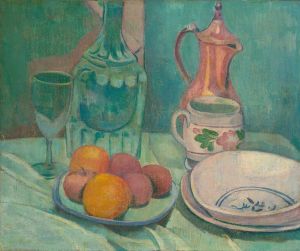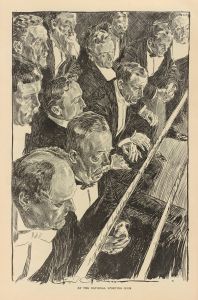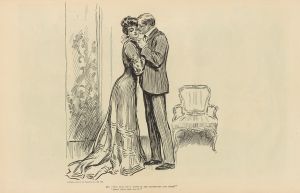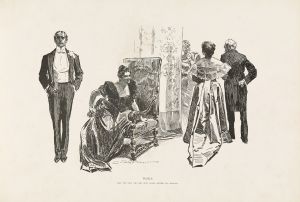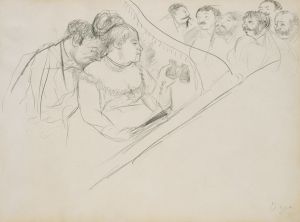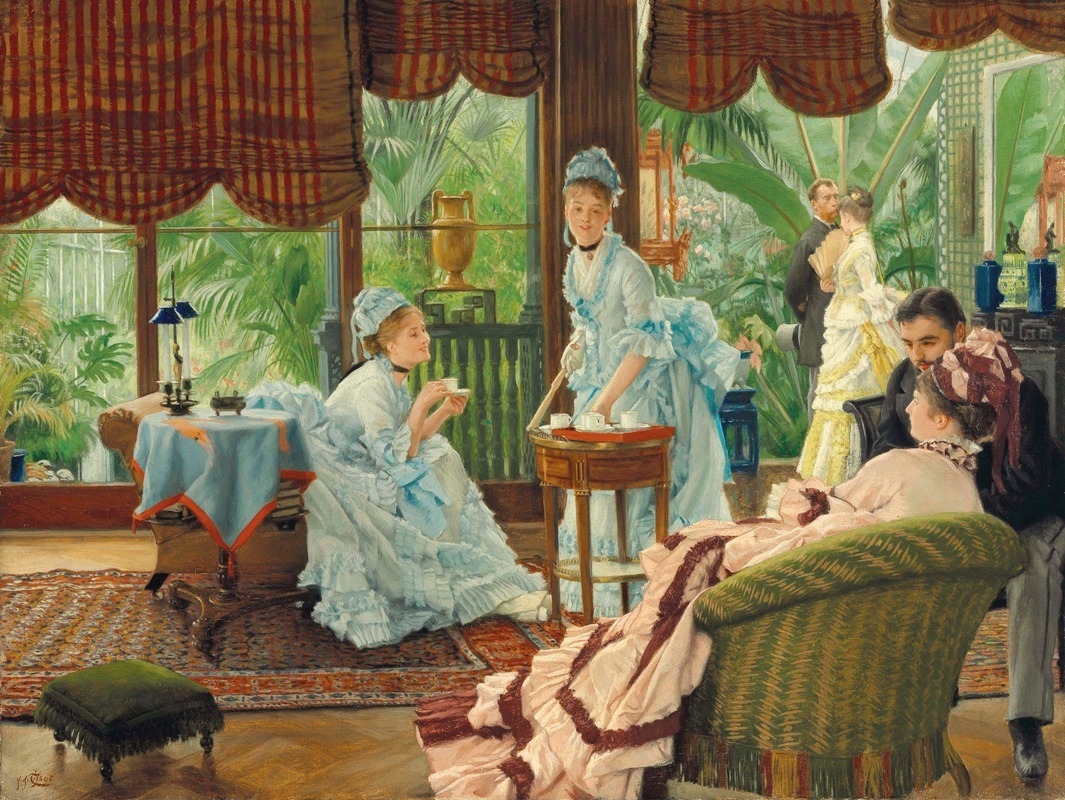
In the Conservatory
A hand-painted replica of James Tissot’s masterpiece In the Conservatory, meticulously crafted by professional artists to capture the true essence of the original. Each piece is created with museum-quality canvas and rare mineral pigments, carefully painted by experienced artists with delicate brushstrokes and rich, layered colors to perfectly recreate the texture of the original artwork. Unlike machine-printed reproductions, this hand-painted version brings the painting to life, infused with the artist’s emotions and skill in every stroke. Whether for personal collection or home decoration, it instantly elevates the artistic atmosphere of any space.
James Tissot's painting "In the Conservatory" is a notable work by the French painter known for his detailed and fashionable depictions of contemporary life in the late 19th century. Tissot, born Jacques Joseph Tissot in 1836 in Nantes, France, was a prominent artist who gained recognition for his ability to capture the nuances of social interactions and the elegance of the period's fashion.
"In the Conservatory" exemplifies Tissot's skill in portraying the leisure activities and domestic environments of the upper-middle class during the Victorian era. The painting is characterized by its meticulous attention to detail, vibrant colors, and the artist's keen observation of the social customs of his time. Tissot's works often reflect the influence of Japanese art, which was popular in Europe during the late 19th century, as well as the precision and clarity associated with the academic art tradition.
The setting of "In the Conservatory" is a glass-enclosed space filled with lush greenery, a common feature in the homes of the affluent during this period. Conservatories were popular as they allowed homeowners to cultivate exotic plants and flowers, serving as a symbol of wealth and sophistication. Tissot's depiction of this environment highlights his interest in capturing the interplay between natural and artificial elements, as well as the way light interacts with glass and foliage.
The figures in the painting are elegantly dressed, reflecting the fashion of the time. Tissot was known for his ability to render textiles with great precision, capturing the textures and patterns of the clothing worn by his subjects. This attention to fashion not only adds to the visual appeal of the painting but also provides insight into the social status and identity of the individuals portrayed.
Tissot's work often includes subtle narratives or suggestions of interpersonal dynamics, inviting viewers to speculate about the relationships and emotions of the figures depicted. However, in keeping with the factual nature of this introduction, it is important to note that any specific interpretation of the narrative content in "In the Conservatory" would be speculative.
Throughout his career, Tissot's paintings were well-received by both the public and critics, and he enjoyed considerable success. His ability to capture the essence of his era with both charm and precision has ensured his continued recognition in the art world. "In the Conservatory" remains an excellent example of Tissot's artistic style and his contribution to the genre of genre painting.
Today, James Tissot's works, including "In the Conservatory," are held in high regard and can be found in major art collections and museums around the world. His paintings continue to be studied for their artistic merit and their reflection of the social and cultural milieu of the late 19th century.





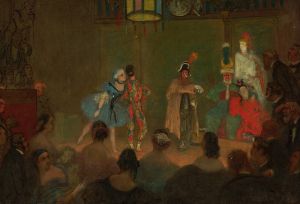




![The Commader in Chief in India [General Sir Frederick Paul Haines], Military and Navy, from Vanity Fair, March 25, 1876](/imgs/214448/s/james-tissot-the-commader-in-chief-in-india-general-sir-frederick-paul-haines-military-and-navy-from-vanity-fair-march-25-1876-18a8ea9e.jpg)

